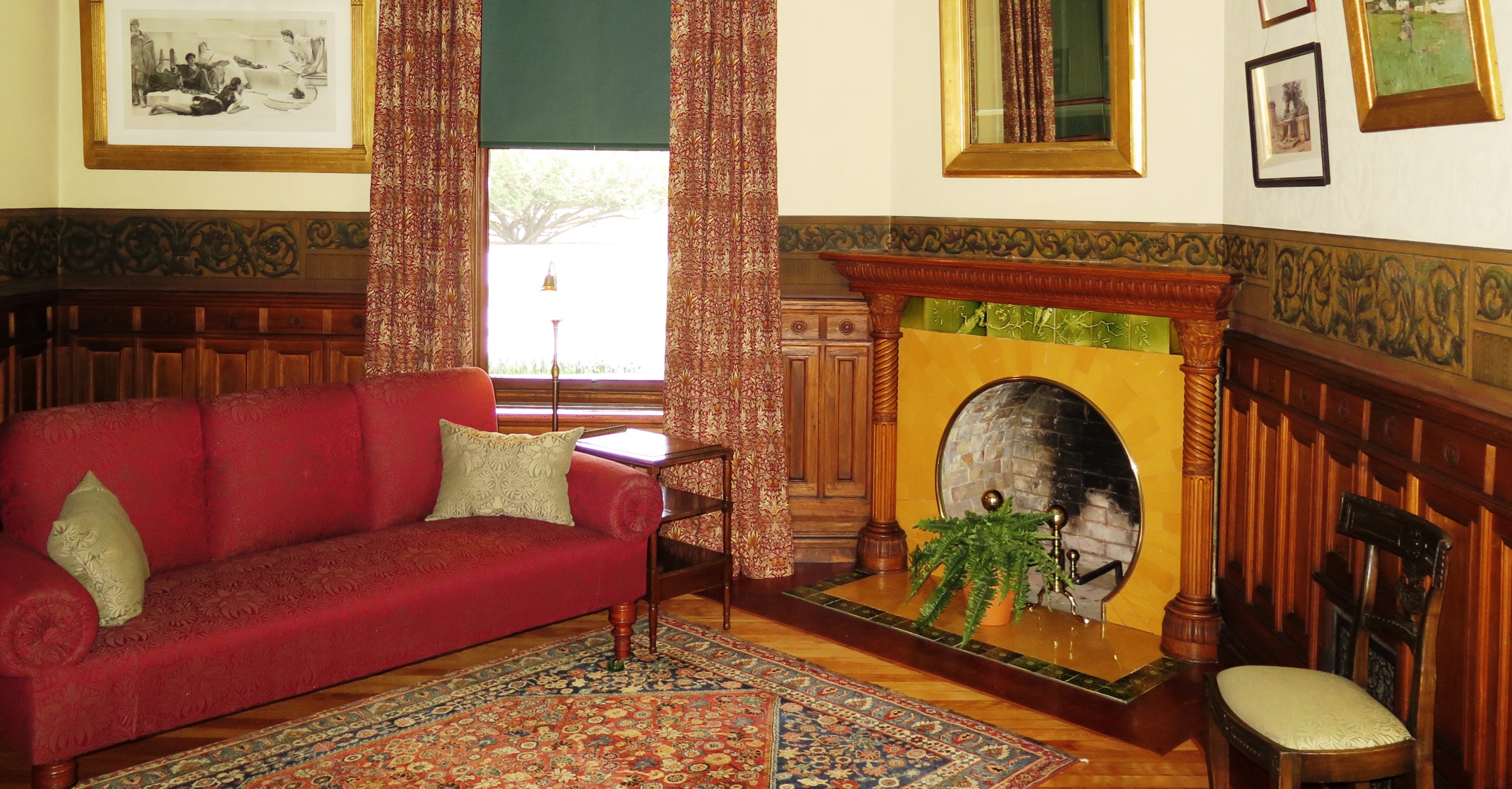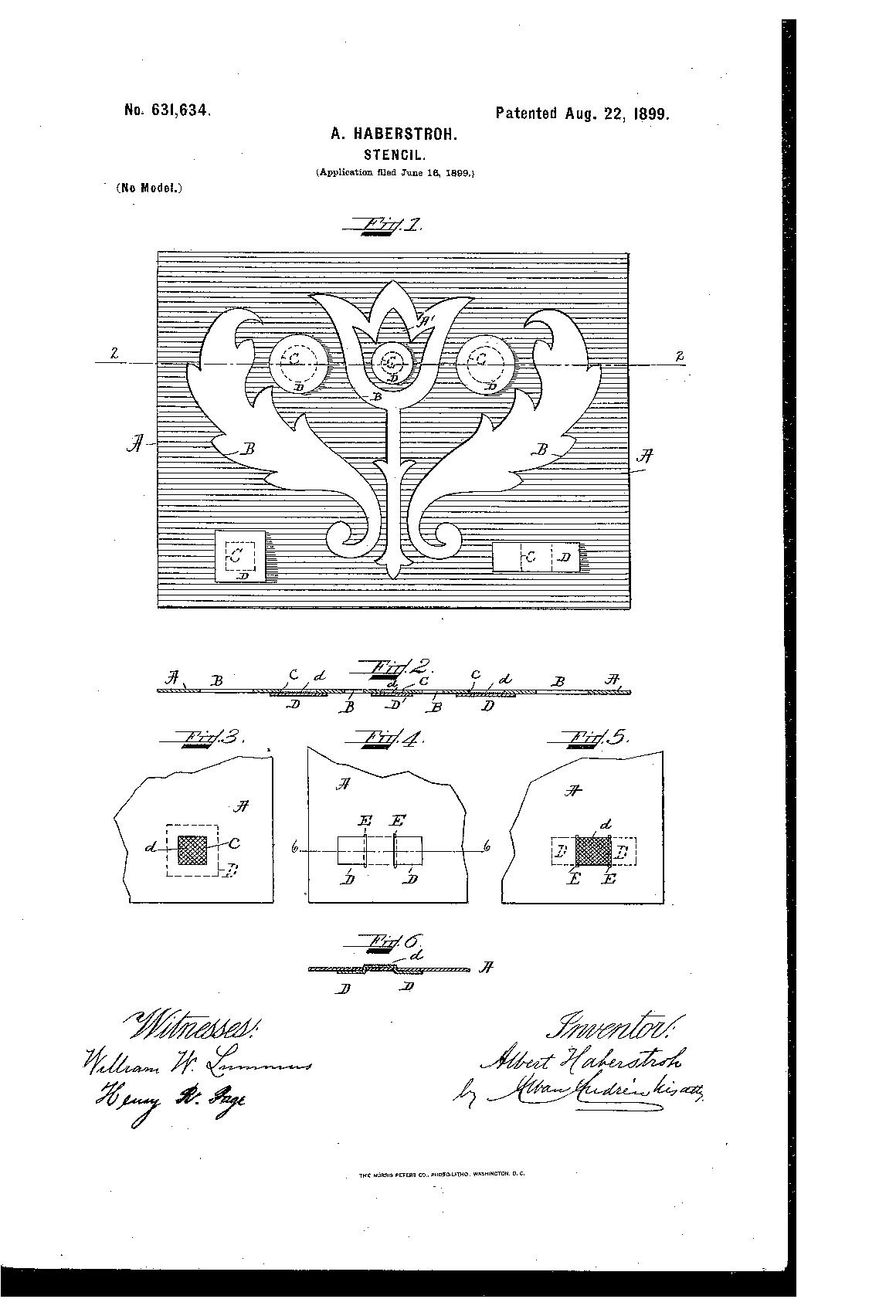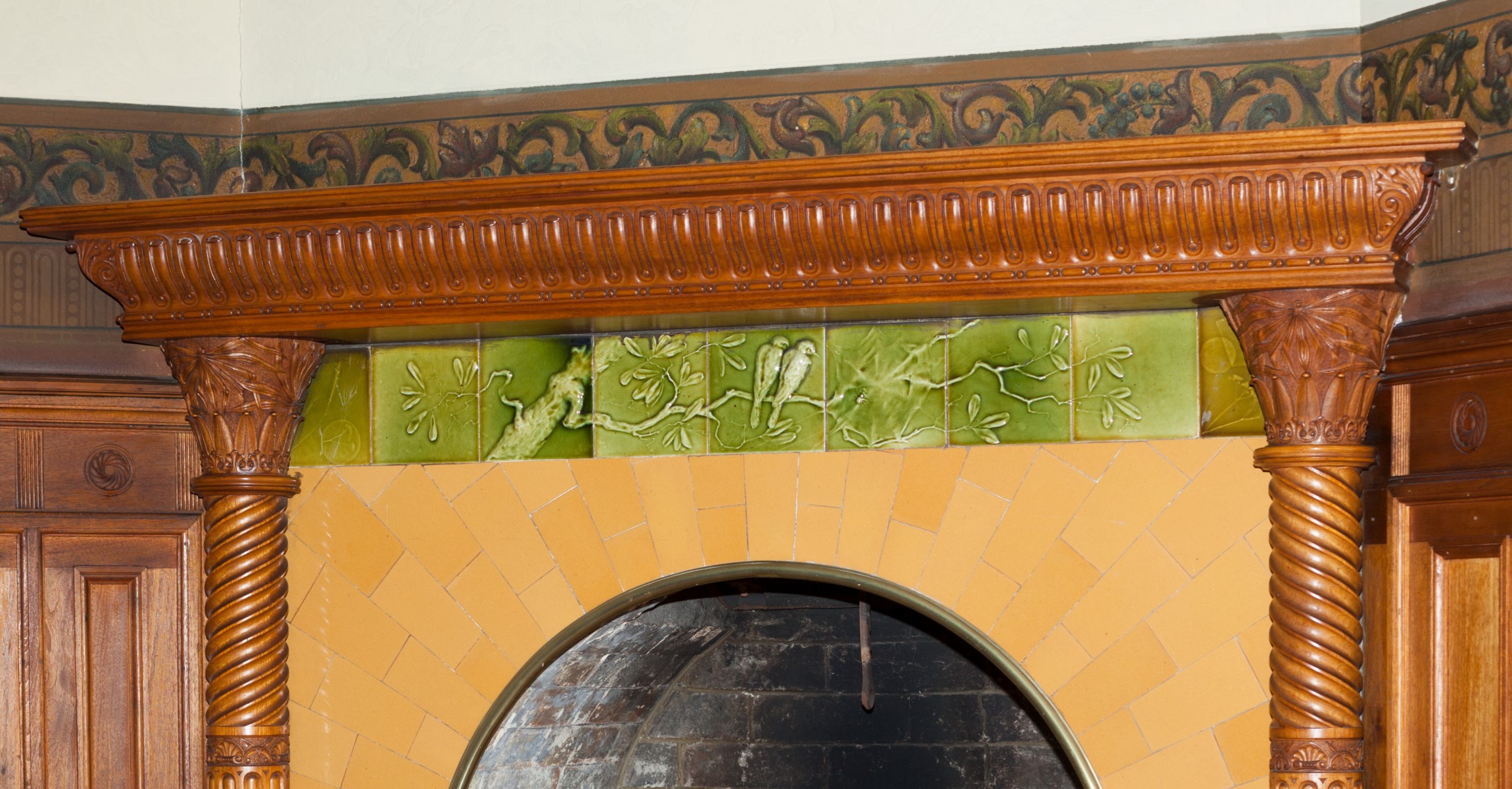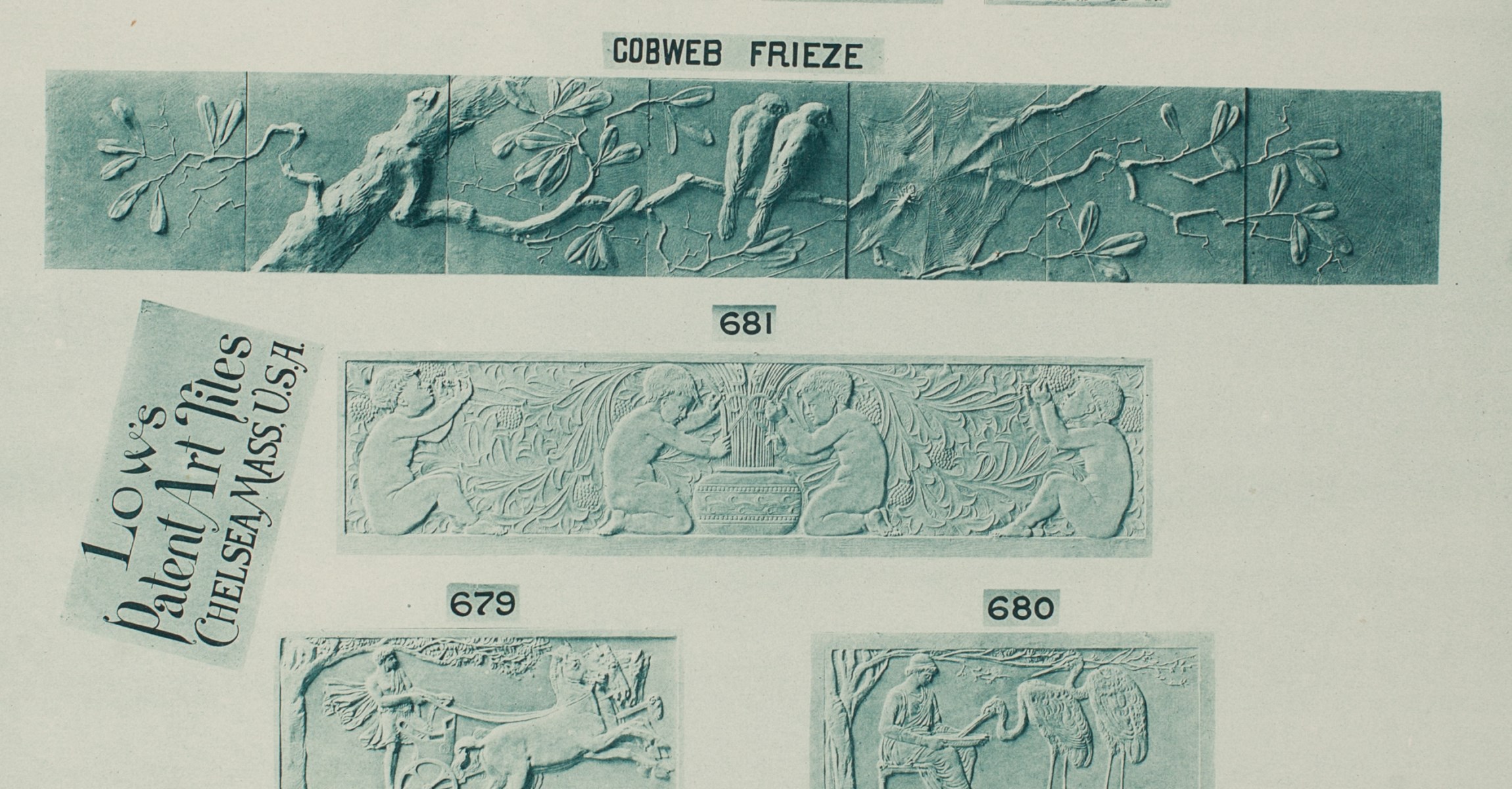 Eustis Estate
Eustis Estate
The Small Parlor

An intimate gathering space
The small parlor, as it was known to the family, hosted more intimate gatherings but could be opened to the large room next door when larger parties required it. The room centers on the moon-shaped fireplace, a decorative motif inspired by the fascination with the Far East during the 1870s and 1880s. This interest in Asia is found throughout the house, but no example is more lovely than the delicately painted bamboo branches that overhang the walls of this room. The John Gardner Low fireplace tiles, marketed in the 1880s as “Cobweb Frieze,” are another example of the interest in seeing beauty in nature.
The walls of this room retain their late twentieth-century paint treatment. Although this room has not undergone paint analysis, family history tells us that the band of decorative paint above the chair rail dates from the nineteenth century. The white walls were originally brown. Historic New England will restore the walls and ceiling of this room when funding allows.
Entertaining at the Estate
In the late 1870s Edith Eustis went from being a single young woman to a married mother of two overseeing the operation of a large household. While much of Edith’s life is still unknown, it is clear that she had a rich social life with many friends and family members in her circle. One of Edith’s childhood friends, Lois Curtis Low, kept a diary in which many entries involve young “Edie.” On March 27, 1869, Lois wrote about visiting Edith at her home when young “Willie” and a friend showed up to join the group. The diary later recounts Edith’s engagement to W.E.C., reporting that Edith was “radiant with bliss” when she told Lois of the news. After Edith and W.E.C.’s marriage, Lois noted the birth of the twins in 1877. In June 1879 Lois noted that she went to Milton to visit Edith at her new home:
“A long delightful visit in Boston, five weeks! …While in Boston I went out to Milton and saw Edith Eustis and her funny little twins and her magnificent house—none comparing. It is one of the finest I ever imagined.”
Domestic Staff at the Estate
During the early years of the Eustis Estate, the domestic staff was entirely made up of people from outside the United States. In 1880 a woman from England worked and lived in the house, likely as the nurse who looked after the young twin boys. A young woman of Irish descent and three people from Canada, including a mother and son, comprised the house staff that year.
Although this room was clearly the domain of the Eustis family, it was attended to and cleaned by the domestic staff. A call button on the wall to the right of the double door summoned the parlor maid, who brought afternoon tea or whatever the family required. A strict cleaning schedule dictated how a house of this size was to be maintained, with specific activities on preassigned days. During the late 1800s most houses of this size were cleaned thoroughly once each week.
Adorning the Walls

In an 1895 advertisement, the Haberstroh & Son firm was listed as “interior decorators and painters” who also specialized in “tapestries, embossed leather, mosaic and textile fabric effects reproduced on ceilings and walls.” The latter technique was a patented system they called the “Haberstroh Process,” a decorative treatment that allowed a painter to stencil designs and patterns onto walls in both high and low relief. The younger Haberstroh was the owner of several U.S. patents, mostly relating to this process. The raised patterns on the wall of the small parlor are likely examples of the Haberstroh Process.
John Gardner Low's Art Tiles

In 1877 the father and son team of John and John Gardner Low founded a ceramics firm under the name of J. and J.G. Low Art Tile in Chelsea, Massachusetts. The pair began to experiment with tile manufacturing that combined artistic design with mass production. Many different varieties of Low Art Tiles are installed throughout the house, including the frieze featured above the round fireplace in the small parlor. The “Cobweb Frieze” is featured in the 1884 “Illustrated Catalogue of Art Tiles Made By J.G. and J. F. Low, Chelsea, Mass. USA”

Low Art Tiles are famous for their unusually artistic designs and brilliant glazes. The Low firm received numerous awards from art shows where they exhibited their ceramics. The firm dissolved in 1907 after the death of J. F. Low.